Can You Spot Fake News? Why Media Literacy Is Urgent Now
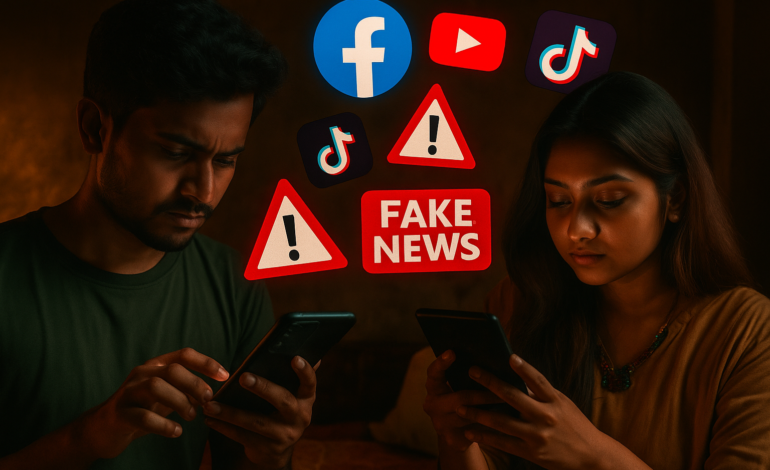
Fake News in Bangladesh: Why Media Literacy Is More Crucial Than Ever
Fake news in Bangladesh is no longer just a social media nuisance—it’s a growing national crisis. With over 130 million internet users and rapid smartphone penetration, Bangladesh has embraced the digital age at full speed. However, this digital revolution has come with a dangerous side effect: the unchecked spread of misinformation in Bangladesh. From fake political rumors and conspiracy theories to doctored images and false health tips, digital misinformation is now a daily threat to public safety and social harmony.
Viral Facebook posts have triggered communal violence, misleading TikTok videos promote unverified health “cures,” and deepfake content is eroding public trust. In a country where digital literacy is rising but media literacy in Bangladesh remains alarmingly low, citizens often struggle to tell truth from fiction.
The solution to this growing threat? Media literacy. In a hyper-connected, information-saturated world, the ability to critically evaluate what we read, watch, and share is not just useful—it’s essential for safeguarding democracy, health, and peace in Bangladesh.
What Is Fake News?
In today’s digital age, the spread of fake news has become a pressing concern worldwide. But what exactly does “fake news” mean? It’s not simply a case of a misreported fact or a journalistic error; fake news refers to the deliberate creation and spread of false or misleading information that is designed to deceive or manipulate the audience. It can be broken into several types:
1. Disinformation
Disinformation is intentionally fabricated content designed to mislead the public. Often, disinformation has political, ideological, or financial motives. It could be a fake news story about a political leader, misleading information about a health crisis, or falsified election results. The goal is to manipulate the audience’s opinions or actions by presenting outright falsehoods as fact.
2. Misinformation
Misinformation, while also false, differs from disinformation in that it is shared without malicious intent. This type of fake news usually spreads when individuals, unaware of its falsity, forward incorrect information. For example, a well-intentioned social media user might share a misleading headline or an inaccurate news report, unaware that the story is false.
3. Malinformation
Malinformation involves true information that is used in a harmful way. This can include the leakage of private data or the sharing of genuine news with the aim of causing harm, such as sharing personal messages to damage someone’s reputation. Although the facts may be correct, the context in which they are shared is intentionally misleading or damaging.
Fake news thrives in environments with low media literacy and high political or religious sensitivity—conditions that are all too common in Bangladesh.
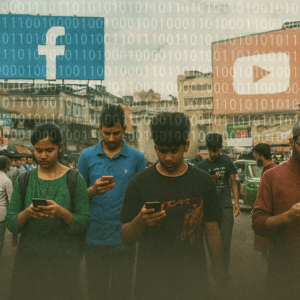
Bangladesh’s Digital Boom—and the Dark Side
With the Digital Bangladesh initiative and increased mobile internet access, the country has seen an explosion of online activity. Platforms like Facebook, YouTube, WhatsApp, and TikTok are used by millions. While this digital access has created new opportunities for education and communication, it has also opened the floodgates to misinformation.
In 2021, a false Facebook rumor about the desecration of the Quran led to deadly communal riots in Cumilla. Similar incidents in Rangpur and Brahmanbaria have shown how easily unverified posts can incite mass panic and violence. Fake news doesn’t just mislead—it can maim, burn, and kill.
Why Bangladesh Is So Vulnerable
Several factors make Bangladesh a hotbed for fake news:
1. Low Media Literacy
One of the primary reasons fake news spreads so easily in Bangladesh is the low level of media literacy among the general population. Critical thinking skills—necessary for evaluating sources, verifying facts, and questioning narratives—are not widespread. As a result, many people consume information from social media and digital platforms without considering its authenticity. With limited access to traditional media education or fact-checking tools, individuals often accept online content at face value, making them easy targets for disinformation campaigns.
2. Language Gaps
Another significant challenge is the language gap in the realm of fact-checking and reliable news sources. While many global fact-checking organizations and media watchdogs operate in English, the majority of Bangladeshis consume and share content in Bangla. As a result, the absence of Bangla-language fact-checking tools or local verification platforms makes it difficult to properly assess the credibility of content circulating online. This gap creates a situation where false narratives can spread unchecked, particularly if the false information is not available in more widely recognized fact-checked sources.
3. Religious and Political Sensitivities
In Bangladesh, religion and politics are deeply intertwined with personal and collective identities. This emotional attachment makes the population more vulnerable to fake news, as misinformation often exploits these sensitive areas. False claims about religious insults or political conspiracies spread like wildfire, especially when they align with the biases and beliefs of particular groups. In an environment where emotions can override reason and evidence, fake news targeting political figures or religious communities can escalate quickly, fueling division and unrest.
4. Echo Chambers and Algorithmic Bias
Social media algorithms are designed to prioritize engagement over accuracy, leading to the formation of echo chambers. These echo chambers reinforce users’ existing beliefs by continuously showing them content that matches their personal views. While this might increase user engagement, it also deepens confirmation bias—the tendency to accept information that supports pre-existing ideas while dismissing contradictory facts. In Bangladesh, this algorithmic bias makes people more susceptible to false narratives that fit their ideological or political preferences, further entrenching the spread of fake news.
5. Lack of Accountability
In many cases, there is little to no accountability for individuals or organizations spreading false information in Bangladesh. Although some laws exist to combat misinformation, the legal framework is often misused, primarily to suppress dissent or silence opposition rather than to address the spread of fake news. This lack of enforcement means that misinformation can circulate freely without consequences. As a result, fake news continues to thrive unchecked, as perpetrators face minimal risk of repercussions for their actions.
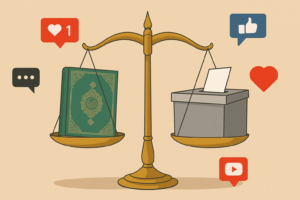
Real-Life Consequences of Fake News in Bangladesh
Fake news in Bangladesh isn’t just an online annoyance—it has real, harmful impacts:
Communal Riots: As seen in Cumilla, Brahmanbaria, and Ramu, viral misinformation can spark inter-religious violence.
Health Risks: During COVID-19, false cures like steam inhalation and garlic water circulated widely, delaying proper treatment.
Political Polarization: Deep fake videos, fake polls, and misquoted speeches have contributed to voter misinformation and party-driven hate campaigns.
Mob Justice: Rumors about child kidnappers have led to innocent people being lynched by mobs.
Mental Health Strain: Constant exposure to alarming or sensational fake content creates anxiety and public paranoia.
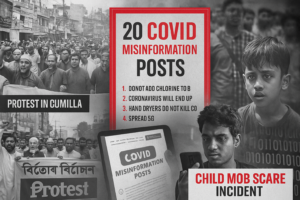
What Is Media Literacy?
Media literacy is the ability to access, analyze, evaluate, and create media across various formats—including news articles, videos, images, social media posts, and more. In today’s complex and fast-paced digital environment, this skill is essential not only for spotting fake news but also for understanding how media messages influence our opinions, emotions, and behaviors.
The Core Skills of a Media-Literate Person
Media literacy involves more than being skeptical of online content. It equips individuals with practical tools to navigate an increasingly noisy and manipulative media landscape. A media-literate person typically demonstrates the following abilities:
Identify Credible Sources
One of the most important aspects of media literacy is the ability to distinguish between reliable and unreliable sources. A media-literate person can evaluate whether a piece of content is coming from a professional, independent news outlet or from a website with questionable motives. They look for transparency, accountability, and editorial standards in the media they consume.
Recognize Bias and Propaganda
Every media message has a purpose—whether to inform, persuade, entertain, or provoke. Media-literate individuals are trained to detect subtle or overt forms of bias, selective reporting, and agenda-driven narratives. This includes identifying emotionally loaded language, exaggerated claims, and framing tactics used to sway public perception.
Understand the Role of Algorithms
Social media platforms and search engines use algorithms that curate content based on user preferences. This often results in filter bubbles or echo chambers where individuals are repeatedly exposed to similar viewpoints. Media-literate users are aware of how algorithms affect what they see online and actively seek out diverse perspectives to avoid becoming trapped in one-sided narratives.
Resist Emotional Manipulation
Much of today’s fake news is designed to provoke strong emotional responses—especially outrage, fear, or anger. A media-literate person pauses to question the intent behind such content. They assess whether a post is trying to inform or manipulate and are less likely to share emotionally charged material without verifying it first.
Cross-Check Information
One of the most important habits of a media-literate individual is fact-checking. Instead of taking headlines or viral posts at face value, they verify information by consulting multiple reputable sources. They use available fact-checking websites, cross-reference content from both local and international news outlets, and rely on evidence-based reporting before accepting information as true.
Teaching Media Literacy in Bangladesh: Why and How?
Media literacy isn’t just an academic topic—it’s a life skill. Here’s how it can be promoted effectively across Bangladeshi society:
1. Incorporate It into the Curriculum
Just as students learn Math and English, they should learn how to critically evaluate news and digital content. Media literacy should be introduced from the school level and extended to universities.
2. Train Teachers First
Teachers need training workshops to understand and teach media literacy. Partnering with media organizations and tech companies can help create training modules in Bangla.
3. Community Outreach Programs
Many older adults or rural residents aren’t in school. NGOs and civil society can host workshops in community centers, mosques, and villages to spread awareness about fake news.
4. Use Social Media for Good
Ironically, the platforms used to spread fake news can also be used to fight it. Interactive Facebook Lives, TikTok explainers, or Instagram infographics in Bangla can be powerful tools for awareness.
5. Support Independent Fact-Checkers
Platforms like BD FactCheck, RumorScanner, and Boom Bangladesh are doing crucial work. Funding and promoting these organizations can expand their reach.
6. Media Literacy for Journalists
Not all journalists are immune to fake news. Newsrooms must provide regular training to verify information, especially in the rush to be first to break news.
The Role of Government, Tech Platforms, and Civil Society
Fighting fake news requires a multi-stakeholder approach:
Government:
Invest in education, not just surveillance.
Update the Digital Security Act to protect citizens without curbing free speech.
Support public media campaigns in rural and urban areas alike.
Tech Platforms:
Make fact-checking features and warning labels available in Bangla.
Reduce algorithmic amplification of sensationalist or false content.
Cooperate with local fact-checkers to flag and remove harmful content faster.
Civil Society:
Raise public awareness through campaigns, storytelling, and workshops.
Encourage digital literacy through community radio, street theatre, and school clubs.

Spot the Signs: How to Identify Fake News
Here’s a quick checklist for everyday readers to detect fake news:
Check the Source: Is the news coming from a known, credible media outlet?
Look for the Author: Anonymous or unknown authors are a red flag.
Read Beyond the Headline: Headlines are often misleading—read the full story.
Check the Date: Old news is sometimes recycled as “breaking” updates.
Verify with Multiple Sources: Trust but verify—always cross-check.
Be Wary of Emotional Triggers: Fake news often evokes outrage or fear.
Check Images: Use reverse image search to check if an image is real or old.
Watch the Language: Excessive caps, exclamation marks, or unverified claims are red flags.
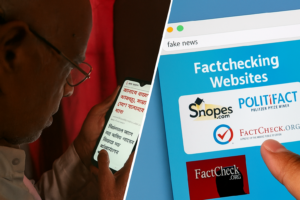
Bangladesh Has a Choice to Make
We are at a crossroads. Bangladesh can either continue to be a victim of its own digital evolution—or it can turn the tide by empowering its citizens with the tools to think critically, verify responsibly, and share wisely.
In a time when anyone can create, share, or forward information with a tap, the real power lies not in the information itself—but in the consumer. Media literacy gives that power back to the people.
Towards a More Informed Future
Fake news is not a minor annoyance—it’s a societal threat that undermines trust; fuels conflict and puts lives at risk. For a democracy like Bangladesh that’s still maturing, this threat is even more acute. But the solution is within reach.
By prioritizing media literacy at all levels—schools, communities, newsrooms, and digital platforms—Bangladesh can build a future where people don’t just consume media, but question it, analyze it, and learn from it.
The next time you see a viral post that seems too shocking to be true—pause. Investigate. Ask. And remember in the digital age, being informed is more than a right. It’s a responsibility.







